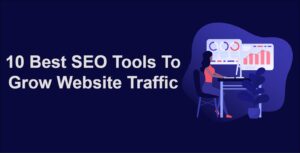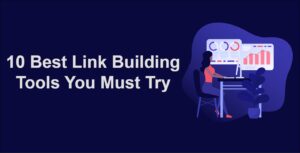When it comes to search engine optimization (SEO), on-page optimization is crucial in improving your website’s visibility and ranking on search engine results pages (SERPs). On page SEO involves optimizing various elements on your website to make it more search engine-friendly and user-friendly.
On page SEO is a dynamic field requiring technical expertise and a deep understanding of user behavior. As you refine your on-page SEO strategies and continuously optimize your content, you’ll be pleasingly on your way to achieving higher search engine rankings and establishing a solid online presence.
Mastering On page SEO optimization techniques is fundamental to improving your website’s visibility and search engine rankings.
By implementing these techniques and avoiding common pitfalls, you can create a user-friendly and search engine-friendly website that attracts organic traffic and delivers value to your audience.
In this comprehensive guide, we will walk you through effective on-page SEO optimization techniques that can help boost your website’s organic traffic and improve its search engine rankings.
On Page SEO
Before diving into the techniques, let’s first understand what on-page SEO optimization is and why it matters for your website’s success.
1. What is On Page SEO Optimization?
On-page SEO optimization refers to the practice of optimizing individual web pages to improve their visibility and ranking on search engines. This involves optimizing both the content and HTML source code of a page to make it more relevant to specific keywords and user intent.
2. Why On Page SEO Matters
Effective on-page SEO optimization can lead to higher search engine rankings, increased organic traffic, and improved user engagement. When search engines understand the relevance and quality of your content, they are more likely to rank your pages higher in their search results.
On-Page SEO Optimization Techniques
Now, let’s dive into the specific techniques that can help you optimize your website’s on-page elements for better search engine visibility.
1. Keyword Research and Targeting
Effective on-page SEO starts with thorough keyword research. Identify relevant keywords and phrases that your target audience is likely to search for.
Keyword research involves a combination of creativity, data analysis, and understanding user needs. It forms the foundation of successful SEO and content strategy.
How to do Keyword Research for better SEO
Step1: Understand Your Niche and Goals, Define your blog’s niche, topics, and target audience. Clarify your goals: whether you want to inform, sell, or educate.
Step2: Brainstorm Seed Keywords: Start with broad terms related to your niche. These are the “seed” keywords that represent your main topics.
Step3: Expand with Keyword Tools: Utilize tools like Google Keyword Planner, Ubersuggest, or SEMrush to explore variations of your seed keywords. These tools offer insights into the search volume and related terms.
Step4: Analyze Search Volume and Competition: Evaluate search volume to gauge keyword popularity. Balance this with competition – aim for keywords with moderate competition and decent search volume.
Step5: Prioritize Relevant and Specific Keywords: Choose keywords that closely match your content and address user intent. Consider long-tail keywords for more specific queries. These selections guide your content creation.
Use keyword research tools like Google Keyword Planner, SEMrush, or Ahrefs, keyword planner to discover high-volume and low-competition keywords.
2. High-Quality and Relevant Content
Creating high-quality, relevant, and engaging content is a cornerstone of on-page SEO. Your content should provide value to your audience, answer their questions, and fulfill their needs. Incorporate your target keywords naturally within the content while maintaining readability.
3. Optimized Title Tags
Well-optimized title tags improve your content’s visibility in search engine results pages (SERPs). They are one of the most prominent on-page elements that search engines use to understand the topic and relevance of your content.
How Title Tag Influence On Page SEO
A compelling and relevant title tag encourages users to click on your link. A higher click-through rate indicates to search engines that your content is valuable to users, potentially improving your rankings.
Including relevant keywords in your title tag increases the chances of your content appearing in search results when users search for those keywords.
A clear and accurately descriptive title tag helps users understand what your content is about before they click. This reduces bounce rates and ensures users find the content they were looking for.
Well-optimized title tags often become the default title when your content is shared on social media platforms. A concise and engaging title encourages social media users to click and explore.
4. Meta Descriptions
Meta descriptions provide a brief summary of your page’s content and encourage users to click through to your website. Craft compelling meta descriptions that entice users while incorporating your target keywords.
Why Meta Descriptions
Optimizing meta tags, especially meta descriptions, helps your content stand out in search results, increases clicks, aligns user expectations, and contributes to an overall positive user experience, all of which are vital for SEO success.
A well-crafted meta description concisely previews your content in search results. A compelling and relevant meta description encourages users to click on your link, increasing click-through rates.
A clear and accurate meta description helps users understand what content offers before they click. It reduces the likelihood of users bouncing back from your site after realizing it doesn’t meet their needs.
Including relevant keywords in the meta description can improve your content’s visibility in search results when users search for those keywords.
Optimized meta descriptions allow you to convey your brand message, ensuring that users recognize your content as authoritative and relevant.
When your content is shared on social media platforms, the meta description often becomes the default description. Crafting a compelling meta description encourages users to engage with your content.
5. Header Tags (H1, H2, H3, etc.)
Header tags organize your content and make it more readable for both users and search engines. Use H1 tags for main headings and incorporate relevant keywords in H2 and H3 tags for subheadings.
Search engines sometimes use title tags as part of structured data snippets, enhancing how your content appears in certain search results.
How Header Tags (H1, H2, H3, etc.) Improve search engine rankings
Header tags help organize content hierarchically. Search engines use this structure to understand the relationships between different sections of your content, making it easier to comprehend and index.
Proper use of header tags allows to emphasize important keywords or key phrases. Search engines recognize these as essential topics within your content, potentially boosting your relevance for those terms.
Header tags enhance content readability and user experience. Clear headings make it simpler for users to scan and grasp the main points of your content, reducing bounce rates and increasing engagement.
Well-structured header tags can contribute to search engine features like rich and featured snippets. These enhanced search results improve your content’s visibility and click-through rates.
As mobile and voice search become more prevalent, header tags assist in presenting content in a structured manner that’s easily digestible by these technologies.
6. URL Structure
Create clean and descriptive URLs that provide users and search engines with a clear idea of the page’s content. Include relevant keywords in the URL while keeping it concise and meaningful.
How URL Structure help improve search rankings
Including relevant keywords in your URL helps search engines and users understand the content’s topic before clicking. This can contribute to improved rankings for those keywords.
Search engine bots use URLs to navigate and index your site. A logical URL structure makes it easier for them to crawl and understand your content’s hierarchy, potentially leading to better indexing.
Clear URLs are easier to share and remember. This aids in both user navigation within your site and external sharing, contributing to increased traffic and engagement.
Well-structured URLs often correlate with breadcrumb navigation, which enhances user experience and aids search engines in understanding your site’s architecture.
As mobile and voice search usage grows, concise and descriptive URLs assist in presenting information effectively to these technologies.
7. Image Optimization
Images can enhance the user experience, but they also need to be optimized for search engines. Use descriptive file names and alt text to provide context to search engines about the content of the images.
What Is Image Optimization
Image optimization in SEO refers to enhancing images on a website to improve search engine rankings and user experience. It involves various techniques to make images more accessible, faster to load, and relevant to search engines. Effective image optimization benefits both SEO and overall website performance.
How To do Image Optimization
Image optimization for SEO involves several steps to ensure images contribute positively to your website’s search engine rankings and user experience.
Here’s a step-by-step guide:
Step1: Select the appropriate format based on the image type: JPEG for photographs, PNG for images with transparency or limited colors, and GIF for animations.
Step2: Use image compression tools to reduce file size without compromising quality. Smaller file sizes lead to faster loading times.
Step3: Resize images to match the dimensions they’ll be displayed on the webpage. Avoid using CSS to adjust image size, as it affects loading speed.
Step4: Give images of descriptive filenames that reflect their content and include relevant keywords separated by hyphens.
Step5: Provide descriptive alt text for each image. Alt text should succinctly describe the image’s content and purpose, incorporating relevant keywords naturally.
8. Internal Linking
Internal linking helps search engines understand the structure and hierarchy of your website. Link to relevant internal pages using descriptive anchor text to provide additional context to both users and search engines.
What Is Internal Linking
Internal linking in SEO refers to creating hyperlinks that connect different pages within the same website. These links allow users to navigate between different sections or pages of the site, and they play an important role in enhancing user experience, aiding website structure, and influencing search engine optimization (SEO) efforts.
How Internal Linking Effects SEO
Internal links allow search engine bots to navigate your website. Proper linking ensures that all your content is discovered, indexed, and ranked, enhancing your site’s overall visibility in search results.
Internal links distribute authority and PageRank across your website. Linking from high-authority pages to others can boost their rankings, making them more likely to appear in top search results.
Internal links facilitate smooth navigation, helping users find relevant content easily. This leads to longer session durations, lower bounce rates, and increased engagement, which search engines consider positive signals for ranking.
Strategically linking related content showcases your site’s expertise on specific topics. This builds topical authority and signals to search engines that your website provides comprehensive information.
Using descriptive anchor text in internal links helps search engines understand the context of the linked page. It reinforces keyword relevance, potentially improving the ranking of the linked page for specific keywords.
Proper internal linking establishes a hierarchical structure for your website. This aids search engines in understanding the importance and relationships of different pages, leading to better crawlability and rankings.
Internal links prevent orphaned pages (pages with no incoming links) from being overlooked by search engines. Proper linking ensures that all valuable pages are considered for ranking.
Internal Linking Strategy and Anchor Text
Developing a thoughtful internal linking strategy and using relevant anchor text helps guide users to valuable pages and informs search engines about your content’s relationships and significance.
9. Mobile-Friendly Design
Mobile-friendliness is a critical factor in on-page SEO optimization. Ensure that your website is responsive and provides a seamless experience across various devices.
Why You Should Consider a Mobile Friendly Design for better SEO
Google predominantly uses the mobile version of a website for indexing and ranking. A mobile-friendly design ensures your content is optimized for mobile devices, improving your search engine visibility.
A mobile-friendly design provides a seamless and user-friendly experience on smartphones and tablets. This leads to lower bounce rates, more extended site visits, and higher engagement, all of which are positive signals for SEO.
Mobile users often need faster internet connections. A mobile-friendly design emphasizes performance optimization, leading to faster load times and improved SEO rankings.
Mobile devices are commonly used for local searches. A mobile-friendly design improves your chances of appearing in local search results and Google’s “near me” searches.
10. Page Speed Optimization
Page speed is a ranking factor that impacts both user experience and search engine rankings. Optimize your website’s performance by compressing images, using browser caching, and minimizing code.
How Page Loading Effects SEO Rankings
Faster-loading pages provide a smoother browsing experience. Users are likelier to engage, stay longer, and interact with your content, signaling to search engines that your site offers value.
Slow-loading pages increase bounce rates as users abandon sites that load slowly. High bounce rates negatively impact SEO rankings, as search engines interpret this behavior as dissatisfaction with the content.
Google prioritizes mobile-first indexing, using the mobile version of your site for ranking. Slow-loading mobile pages can lead to lower mobile orders and reduced organic traffic.
Page speed is a confirmed ranking factor in search engine algorithms. Fast-loading pages are preferred because they improve user experience, aligning with search engines’ goal of delivering quality results.
Google’s Core Web Vitals emphasize page speed metrics like Largest Contentful Paint (LCP), First Input Delay (FID), and Cumulative Layout Shift (CLS). Meeting these metrics is essential for ranking well in search results.
Slow pages can frustrate mobile users who need more data and patience. Google considers mobile usability a ranking factor, making page speed a critical aspect of mobile SEO.
As voice search and mobile usage increase, fast-loading pages become even more critical. Users on the go and using voice commands expect quick results.
11. User Engagement Signals
Search engines take into account user engagement signals such as bounce rate, time on page, and click-through rate. Create engaging content that encourages users to stay on your page and interact with your website.
Common Mistakes to Avoid
In the pursuit of effective on-page SEO optimization, it’s important to steer clear of common mistakes that can negatively impact your efforts.
1. Keyword Stuffing
Overloading your content with keywords can lead to poor user experience and potential penalties from search engines. Focus on natural, relevant keyword usage.
2. Ignoring User Intent
Understanding user intent is crucial for creating relevant and valuable content. Don’t optimize solely for keywords; aim to address user needs and queries.
3. Neglecting Mobile Experience
A poor mobile experience can lead to higher bounce rates and lower rankings. Ensure your website is mobile-friendly and provides a seamless experience on all devices.
4. Neglecting Page Speed
Slow-loading pages can frustrate users and lead to higher bounce rates. Prioritize page speed optimization to improve user experience and search engine rankings.
Monitoring and Continuous Improvement
On-page SEO optimization is an ongoing process that requires monitoring, analysis, and continuous improvement.
1. Regularly Monitor Performance
Use tools like Google Analytics and Google Search Console to monitor your website’s performance, including organic traffic, keyword rankings, and user engagement metrics.
2. Analyze and Adjust
Analyze the performance data to identify trends, strengths, and areas for improvement. Adjust your on-page SEO strategy accordingly to capitalize on successes and address weaknesses.





